Museum catalog
『Shashin de miru Zainichi Korean no 100-nen (100 Years of History in Photographs)』(Akashi Shoten, 2008)
*A4, 160p, Text in Japanese with some text in Korean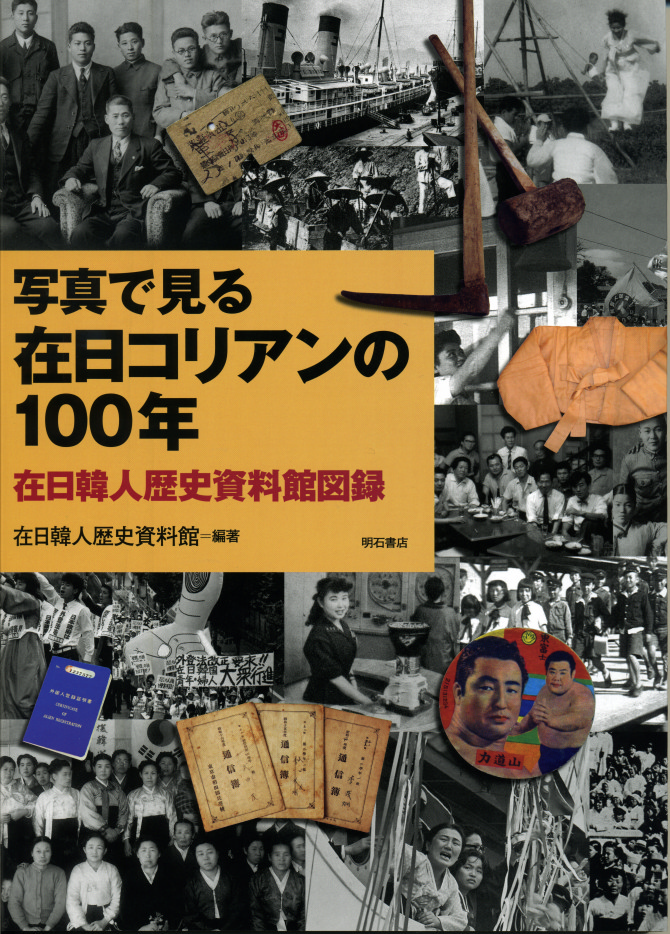
-
Contents
<Japan colonial period>
1. The First Generation of Koreans in Imperial Japan
2. February 8th Declaration of Independence
3. The Great Kanto Earthquake Korean Massacre
4. Surviving in Japan
5. Daily Life Before Liberation
6. Leading the Social and Labor Movements
7. Forced Mobilization
8. The Insanity of Education for Molding Loyal Imperial Subjects
<After liberation>
9. The Great Joy of Liberation and Return
10. Korean Ethnic Pride
11. Ethnic Education ― Giving the Korean Language Back to the Children
12. Control and Oppression
13. Partition of the Korean peninsula and the Korean War
14. Unemployment, Poverty, and Life at the Bottom of Society
15. Repatriation to North Korea
16. Calls for the End of Discrimination
17. The Anti-Fingerprinting Campaign
18. Zainichi Koreans Active in Japanese Society
19. Cultures and Customs Passed on from Generation to Generation
20. Family Portraits
Chronological table of 100 years
Museum guidebook (Japanese)
『100-nen no Akasi (100 Years of History)』(2020)
*B5, 28p, Text in Japanese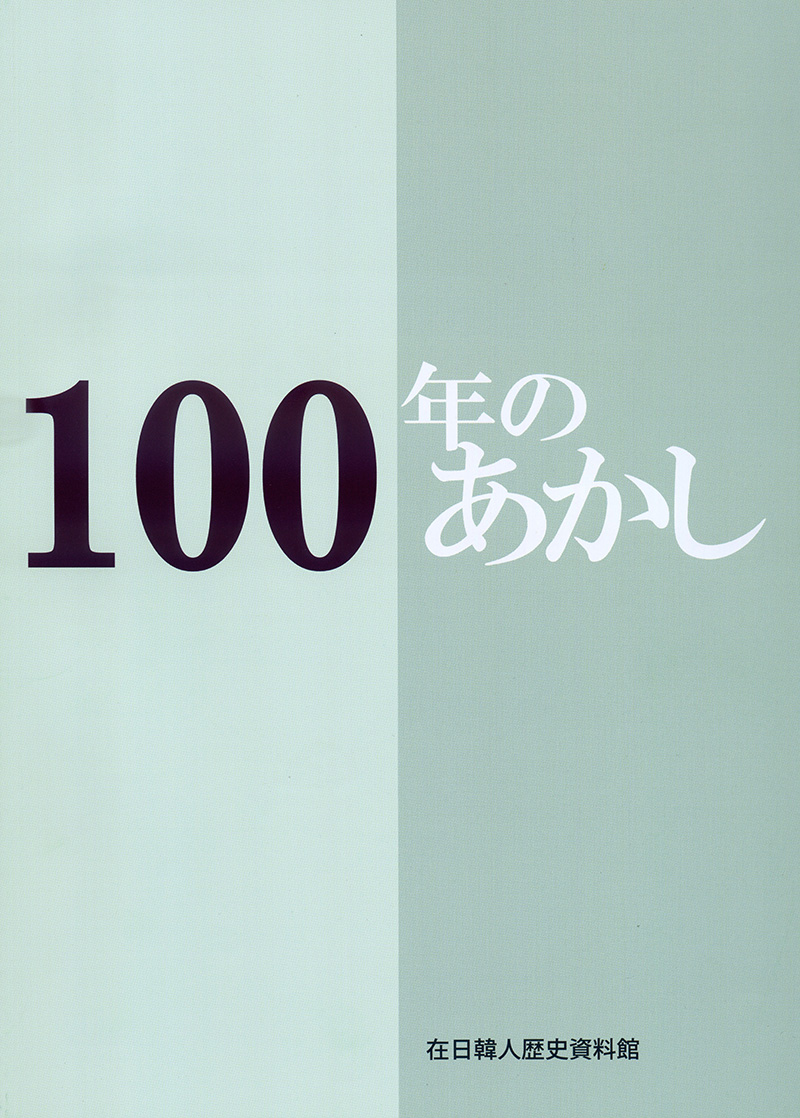
-
The First Generation of Koreans in Imperial Japan
February 8th Declaration of Independence / Leading the Social and Labor Movements
The Great Kanto Earthquake Korean Massacre
Surviving in Japan
Daily Life Before Liberation
Forced Mobilization
The Insanity of Education for Molding Loyal Imperial Subjects
The Great Joy of Liberation and Return
Korean Ethnic Pride
Ethnic Education -Giving the Korean Language Back to the Children
Control and Oppression
Unemployment, Poverty, and Life at the Bottom of Society
Calls for the End of Discrimination
The Anti-Fingerprinting Campaign
Zainichi Koreans Active in Japanese Society
Cultures and Customs Passed on from Generation to Generation
Family Portraits
Chronological table of 100 years
Museum guidebook (Korean)
『100-nyeon eui Yeoksa (100 Years of History)』(2020)
*B5, 28p, Text in Korean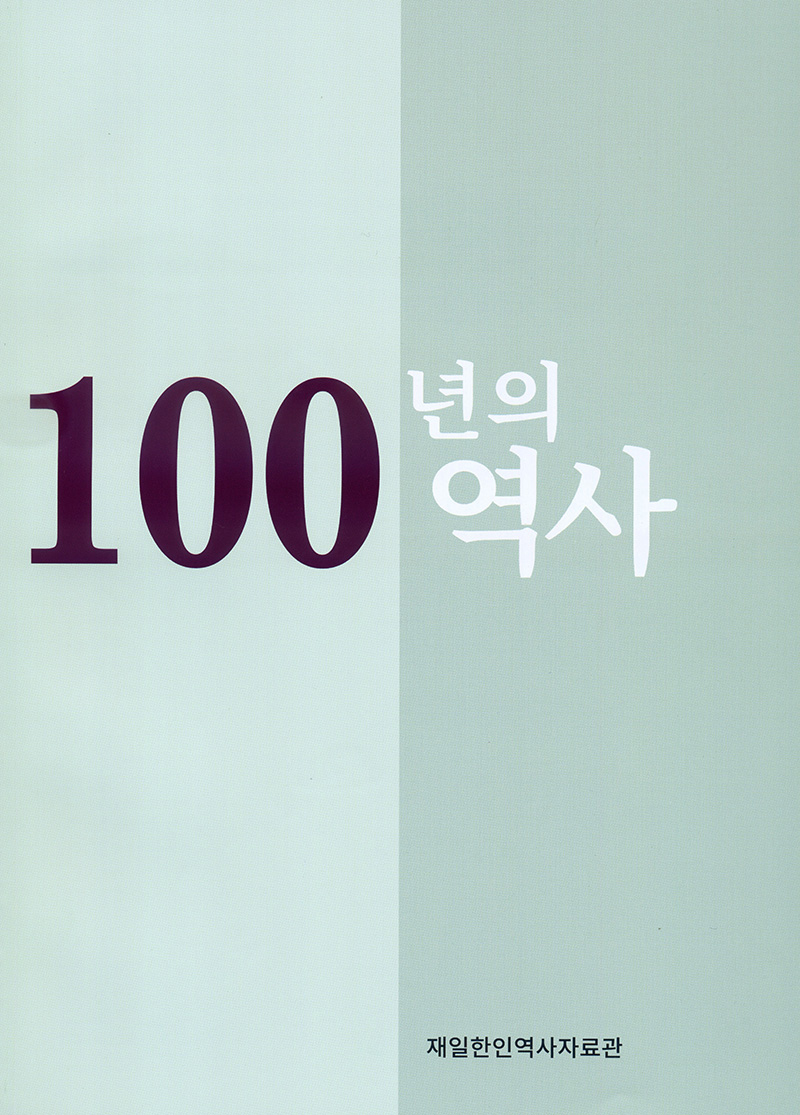
-
The First Generation of Koreans in Imperial Japan
February 8th Declaration of Independence / Leading the Social and Labor Movements
The Great Kanto Earthquake Korean Massacre
Surviving in Japan
Daily Life Before Liberation
Forced Mobilization
The Insanity of Education for Molding Loyal Imperial Subjects
The Great Joy of Liberation and Return
Korean Ethnic Pride
Ethnic Education -Giving the Korean Language Back to the Children
Control and Oppression
Unemployment, Poverty, and Life at the Bottom of Society
Calls for the End of Discrimination
The Anti-Fingerprinting Campaign
Zainichi Koreans Active in Japanese Society
Cultures and Customs Passed on from Generation to Generation
Family Portraits
Chronological table of 100 years
Museum guidebook (English)
『100 Years of History』(2019)
*B5, 28p, Text in English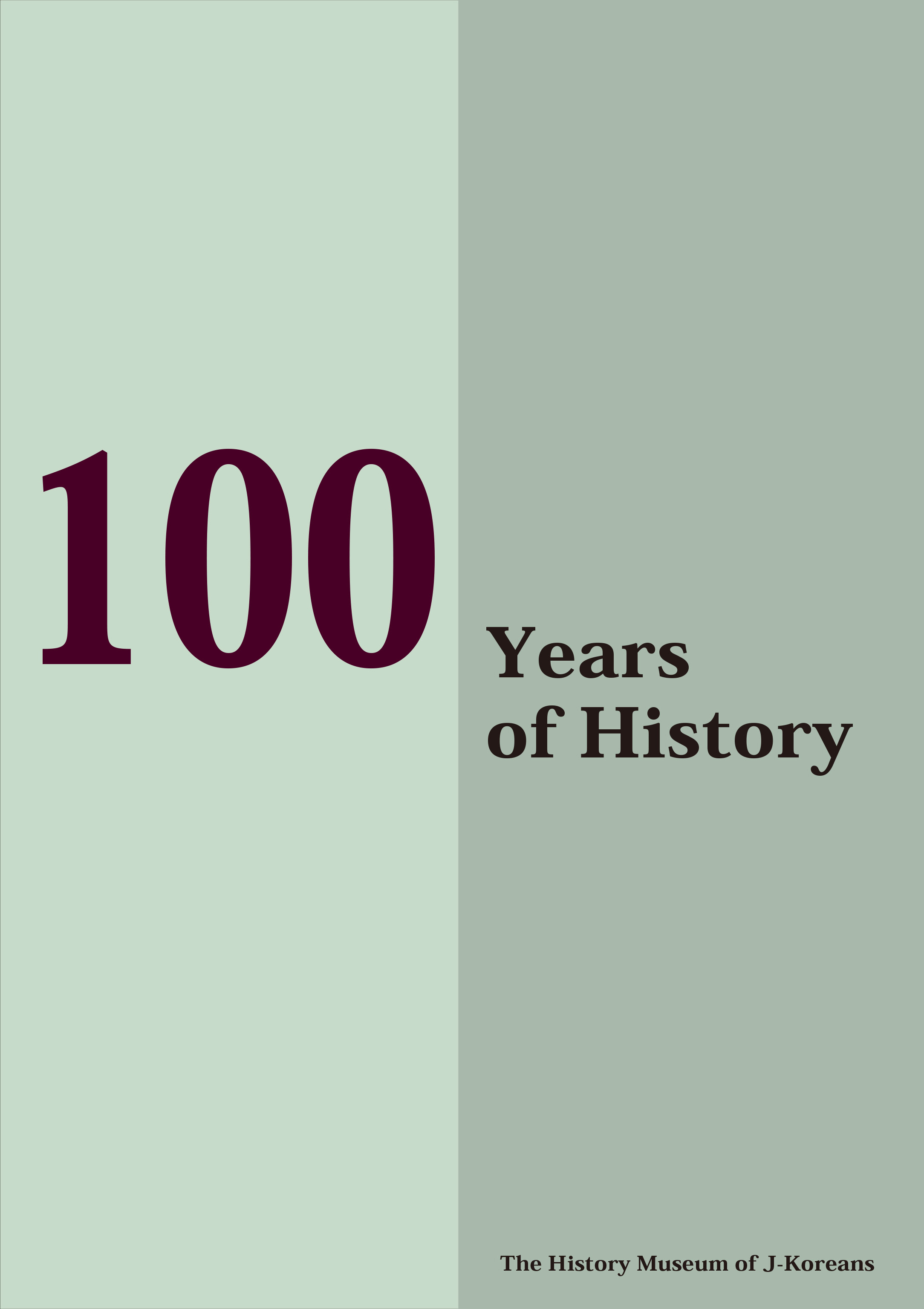
-
The First Generation of Koreans in Imperial Japan
February 8th Declaration of Independence
Leading the Social and Labor Movements
The Great Kanto Earthquake Korean Massacre
Surviving in Japan
Daily Life Before Liberation
Forced Mobilization
The Insanity of Education for Molding Loyal Imperial Subjects
The Great Joy of Liberation and Return
Korean Ethnic Pride
Ethnic Education -Giving the Korean Language Back to the Children
Control and Oppression
Unemployment, Poverty, and Life at the Bottom of Society
Repatriation to North
Calls for the End of Discrimination
The Anti-Fingerprinting Campaign
Zainichi Koreans Active in Japanese Society
Cultures and Customs Passed on from Generation to Generation
Family Portraits
-
Record of Museum Lectures
『Chōsen kingendaishi kara Nihon o tō (Rethinking Japan through the modern history of Korea)』(2015)
*A4, 145p, Text in Japanese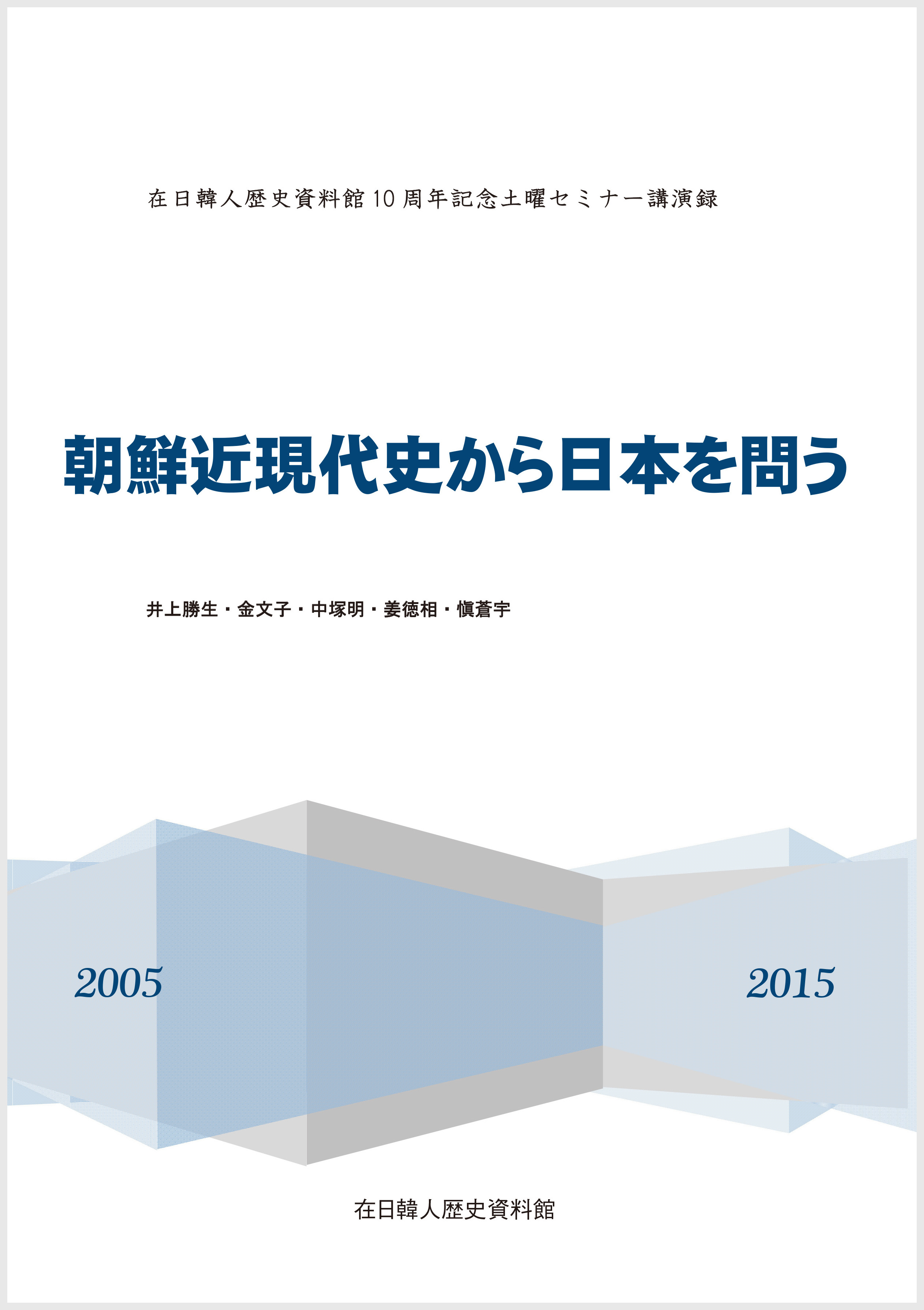
-
- The resistance to Japan・Donghak Peasant Revolution, Concealen Extermination Operation by the Japanese army -On the 120th anniversary of the First Sino-Japanese War-
Katsuo Inoue (Professor Emeritus, Hokkaido University) - About the Assassination of Empress Myeongseong
Mun-Ja Kim (Historian, author of “The Russo-Japanese War and the Korean Empire”) - Chōsen(Korean) view of Ryotaro Shiba in the “Clouds Above the Hill”
Akira Nakatsuka (Professor Emeritus, Nara Women's University) - The Great Kanto Earthquake Korean Massacre from the perspective of Japan-Korea relations -beyond one national history-
Duk-sang Kang (Emeritus Professor, University of Shiga Prefecture) - Thinking about the relationship between Japan and the Korean Peninsula from the perspective of "war"
Chang-U Shin (Hosei University)
- The resistance to Japan・Donghak Peasant Revolution, Concealen Extermination Operation by the Japanese army -On the 120th anniversary of the First Sino-Japanese War-
Record of Museum Lectures
『Chōsen kingendaishi kara Nihon o tō 2 (Rethinking Japan through the modern history of Korea 2)』(2018)
*A4, 132p, Text in Japanese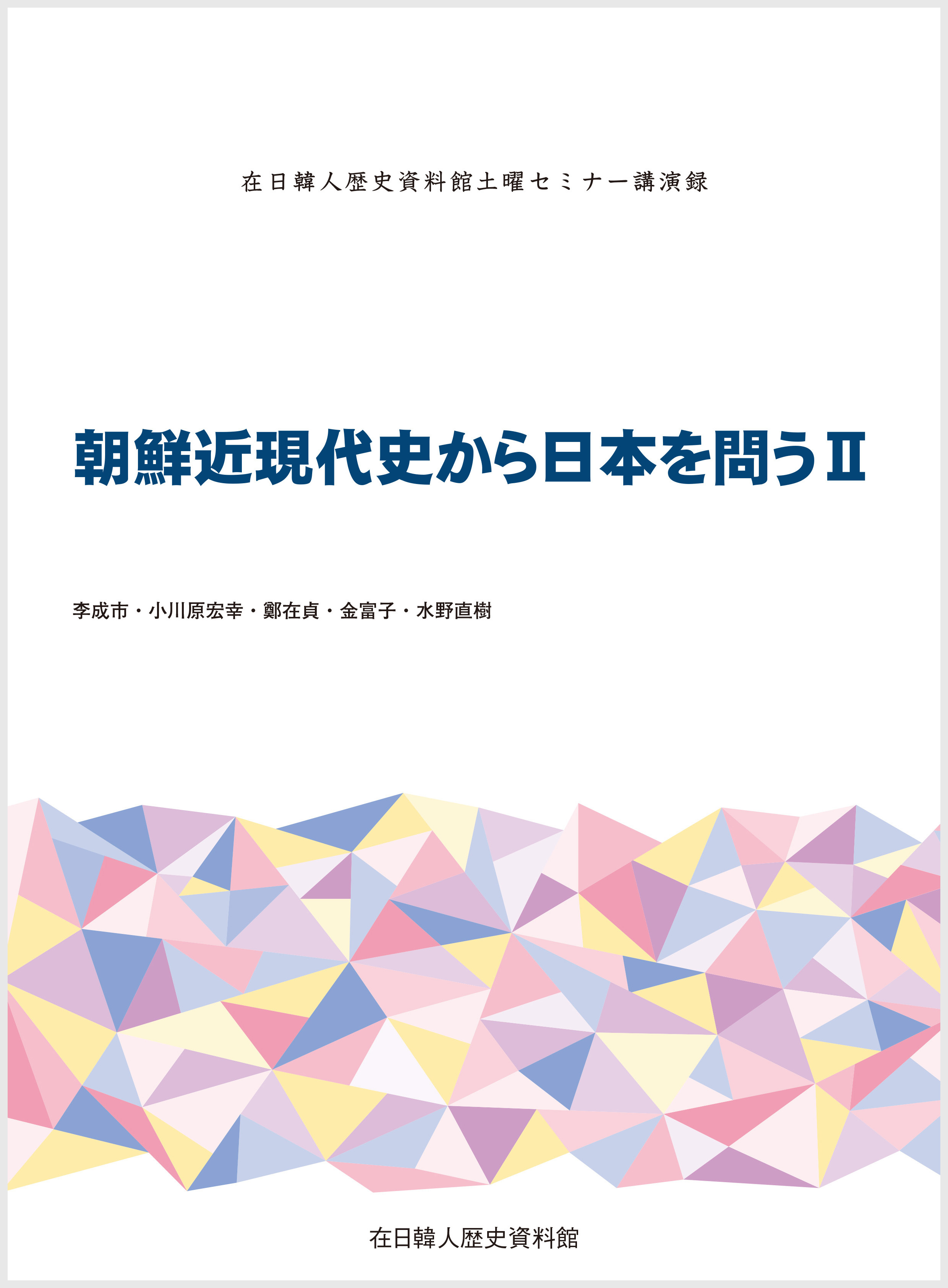
-
- Asian view of modern Japanese
-Focusing on Sokichi Tsuda's view of China and Korea-
Sungsi Lee (Waseda University) - Rethinking the East Asian community concept
-Based on Ahn Jung-geun's "On Peace in East Asia"-
Hiroyuki Ogawara (Doshisha University) - Colonial rule of Imperial Japan and the Korean Railway
Jae-jung Chung (Professor Emeritus, Seoul City University) - Why could not the first generation of Koreans in Japan read characters
-Colonial education system from a gender perspective-
Puja Kim (Tokyo University of Foreign Studies) - Koreans in Imperial Japan and Maintenance of the Public Order Act
Naoki Mizuno (Professor Emeritus, Kyoto University)
- Asian view of modern Japanese
Record of Symposium
『Higashi ajia no naka no ni-hachi dokuritsu sengen: Wakamonotachi no deai to yume (February 8th Declaration of Independence in East Asia: Young people's encounters and dreams)』(Akashi Shoten, 2020)
*Shi-roku(127×188), 224p, Text in Japanese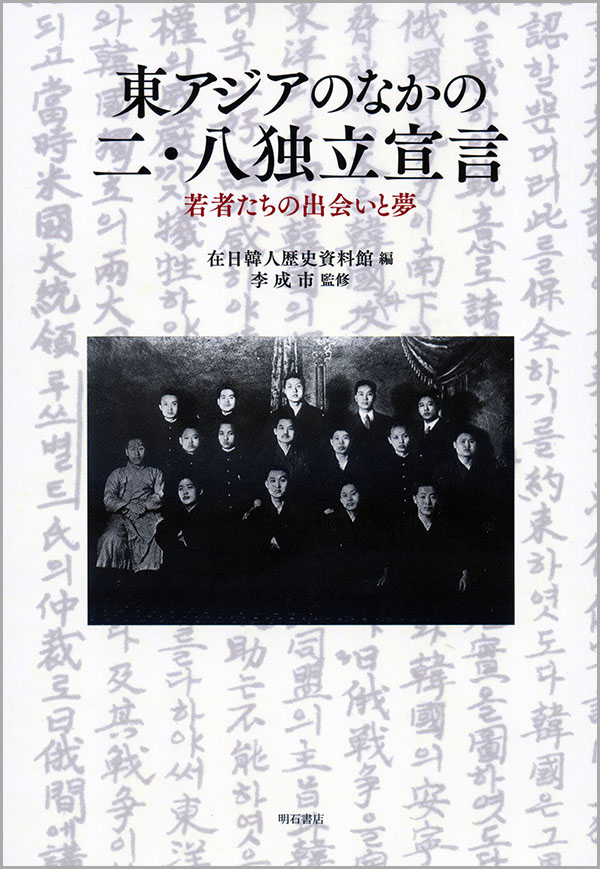
-
Introduction: Historical significance of the February 8th Declaration of Independence in East Asia
Sungsi Lee (Director, The History Museum of J-Koreans)1. Reconsideration of the February 8th Declaration of Independence: Beyond the "Occasion" of the March 1st Independence Movement
Yasteru Ono (Kyushu University)
2. Korean students in Japan after the February 8th Declaration of Independence: Struggle against "assimilation" and "Japan-Korean integration(Naisen-yuwa)"
Youngmi Bae (The Independence Hall of Korea)
3. Christianity in the February 8th Declaration of Independence and March 1st Movement: Distance between "signer of declaration of Independence" and "church"
Motokazu Matsutani (Tohoku Gakuin University)
4. "Cooperation" between Taiwanese and Korean student in Tokyo: Anti-colonial movement seen from "Ajia Koron"
Hsufeng Chi (Waseda University)
5. "February 8th Declaration of Independence" and "March 1st Independence Movement" seen from the May 4th Movement: from the point of view of Chinese history
Shiro Onodera (Saitama University)
6. Reverberation of the March 1st Independence Movement: from the perspective of history of Zainichi Koreans
Younghwan Chong (Meiji Gakuin University)
Discussion
Host: Sungsi Lee
Panel: Yasteru Ono, Youngmi Bae, Motokazu Matsutani, Hsufeng Chi, Shiro Onodera, Younghwan Chong
Reference data
February 8th Declaration of Independence (Korean, Japanese)
Photograph: February 8th Declaration of Independence (Chinese, English)